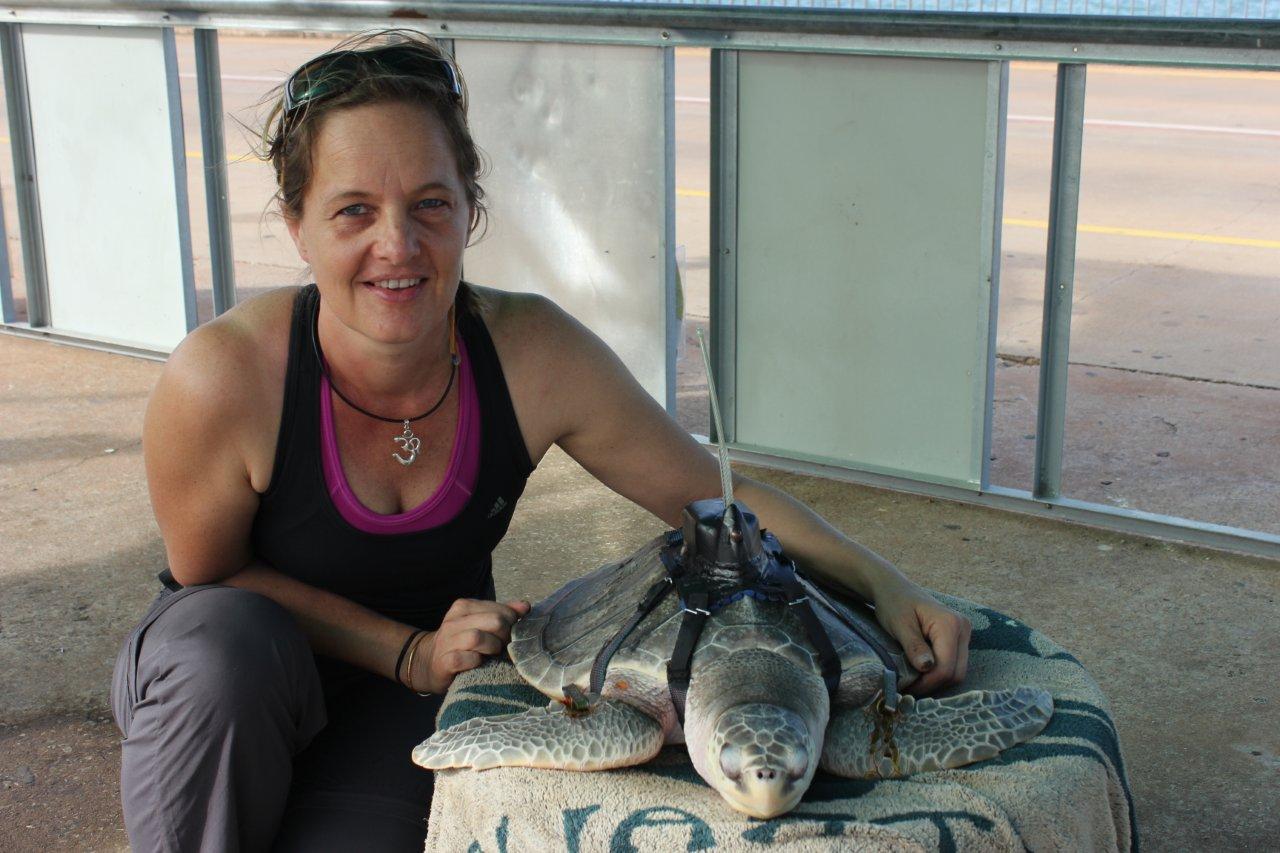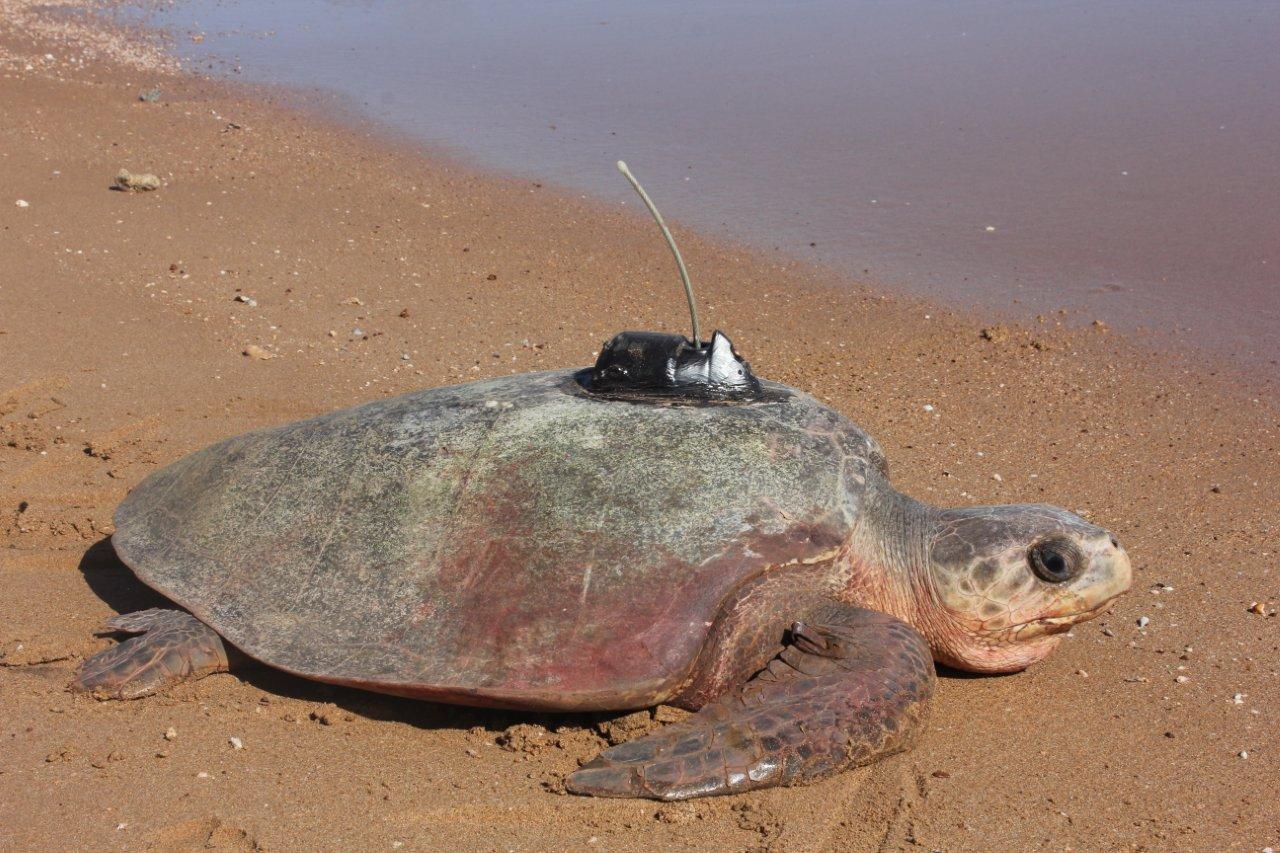Threatened Species Day is a national day of reflection for threatened species within Australia. Held as part of the Department of Environment’s Biodiversity Month, it is an opportunity to highlight efforts made to understand and protect animals considered at risk of extinction, including those that inhabit our marine environment.
The Australian Institute of Marine Science supports research into a number of threatened species listed in the Environment Protection and Biodiversity Conservation (EPBC) Act as part of our commitment to researching the extent and value of Australia’s marine biodiversity. This includes locating critical habitats for key threatened and endangered species, identifying threatening processes and assessing whether current reserves and management systems management address current vulnerabilities.
Ghost nets and sea turtles is the first in a series of short stories for Biodiversity Month about AIMS research into tropical marine biodiversity and some of Australia’s threatened marine species.
Ghost nets and sea turtles
Australia harbours 6 of the world’s seven species of ancient mariners - marine turtles. Unfortunately, each species is listed as either endangered or vulnerable under Australia’s Environment Protection and Biodiversity Conservation Act. This listing shows they are at risk of extinction if the current threats they face are not addressed.
“Marine turtles face a number of threats, both on land and at sea, and at all stages of their life cycle. One concern, particularly in the Arafura Timor Sea in Australia’s north, is ghost nets” explains Dr Kiki Dethmers, a researcher working at the Arafura Timor Research Facility as part of North Australia Marine Research Alliance (to which AIMS is a major partner). Ghost nets are fishing nets discarded at sea. They pose a significant hazard as they drift on currents, capturing and entangling marine wildlife such as fish, dugong and particularly marine turtles. Over half of the marine animals found entangled in washed up ghost nets are deceased turtles. Ghost nets are also a significant navigational hazard to shipping and create economic loss issues for the commercial fishing industry.
Dr Dethmers research focusses on the interaction between turtles, particularly the Olive Ridley turtle (Lepidochelys olivacea), and ghost nets in the Arafura and Timor Seas.
“The north of Australia is the only area in Australia that Olive Ridleys nest. They make up the largest proportion of all turtles that have been found entangled in ghost nets and that adds up to presumably hundreds, if not thousands, of Olive Ridley turtles killed each year in ghost nets,“ explains Dr Dethmers.
Modelling, satellite tags and genetics
“The problem with ghost nets is that they are incredibly difficult to find at sea, and while we occasionally get reports from boats that spot them in this region, we usually don’t know where they are until they have washed up on shore and created irreparable damage.”
To predict where ghost nets will drift, Dr Dethmers is using existing understanding of the currents and water circulation patterns of the Arafura and Timor Seas, developed by AIMS researchers. Based on this oceanographic modelling information, she creates maps of where the nets are likely to collect. Her research also looks at the movement of turtles to and from nesting and foraging grounds. These critical habitats are identified by satellite tracking individual turtles, including Olive Ridleys. By combining the predicted location of the ghost nets and the location of the turtle's critical habitats, Dr Dethmers will assess the most important geographical areas to focus management efforts.
Some breeding populations in the broader Arafura and Timor Sea region have been already been decimated through decades of predation of eggs by feral pigs, feral dogs and monitor lizards, previous incidental bycatch fisheries activities, and harvest. A key aspect of this study is identifying populations of turtles that are most at risk from these threats and ghost nets. Dr Dethmers conducts genetic research into breeding populations in the region and compares these with the genetics of entangled turtles to determine source populations.
“It’s important to find if these turtles washed up in nets are coming from a particularly vulnerable breeding population. Local conservation measures on those vulnerable nesting beaches will need to be implemented in combination with management of the ghost net problem to fully protect this species and guarantee the survival of this threatened population into the future,” concluded Dr Dethmers.
Studies into Australia’s threatened species are part of AIMS’ investigations in tropical marine biodiversity. For more information about AIMS’ biodiversity research, click here.




